Art Calendar, 27. August 2022
Sven Creutzmann "Cuba: The Never-Ending Revolution".
Sammlung Michael Horbach
28 August 2022 - 09 October 2022. Vernissage: Sunday, 28.08.2022 11:00-14:00
German version below
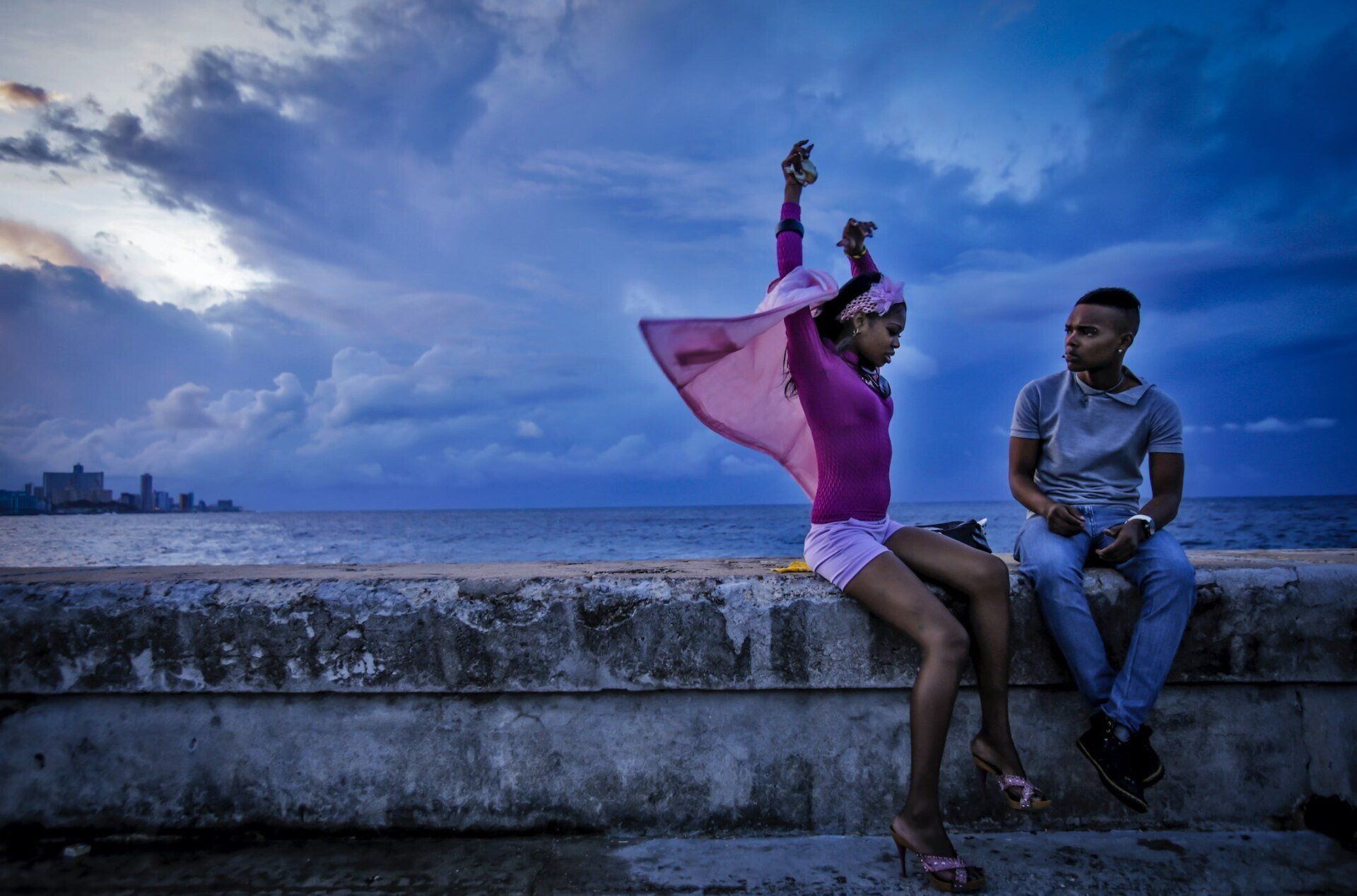
The Bat - Young Cubans at Blue Hour on Havana's Malecon.
Die Fledermaus - Junge Cubaner in der Blue Hour am Malecon Havannas
©Sven Creutzmann
Düsseldorf, 27.8.2022: The Michael Horbach Foundation presents the new exhibition by Sven Creutzmann "Cuba: The Endless Revolution". Sven Creutzmann has been documenting Fidel Castro's Cuban revolution for 30 years. He had access to the Comandante en Jefe with his camera and he is the only permanently accredited German journalist in Cuba. He photographed Fidel with Nelson Mandela, at the funeral of Che Guevara, and together with Hugo Chavez. He was there when Obama became the first US president to visit Cuba, and he was a witness at Pope John Paul II's historic meeting with Castro, almost 25 years ago.
The then editor of Stern, Thomas Osterkorn, wrote about him in the editorial of the magazine: "Hardly any journalist knows Cuba as well as Sven Creutzmann". He has published several books on Cuba, including "Havana - In the Heart of Cuba", Frederking & Thaler, 2019. The Michael Horbach Foundation has been located in the Cologne in former studio rooms since 2011.
The foundation is dedicated to charitable projects, especially projects that help foreign families and single women living below the poverty line. In addition, the foundation is committed to cultural projects that are particularly worthy of support.

Fidel's silhouette - Fidel Castro's speech in Revolution Square during a ceremony in which Hugo Chavez,
President of Venezuela, receives a UNESCO award.
Fidels Silhouette - Fidel Castro Rede auf dem Platz der Revolution während einer Zeremonie ind er Hugo Chavez, Präsident Venezuelas, eine UNESCO Auszeichnung bekommt.
©Sven Creutzmann
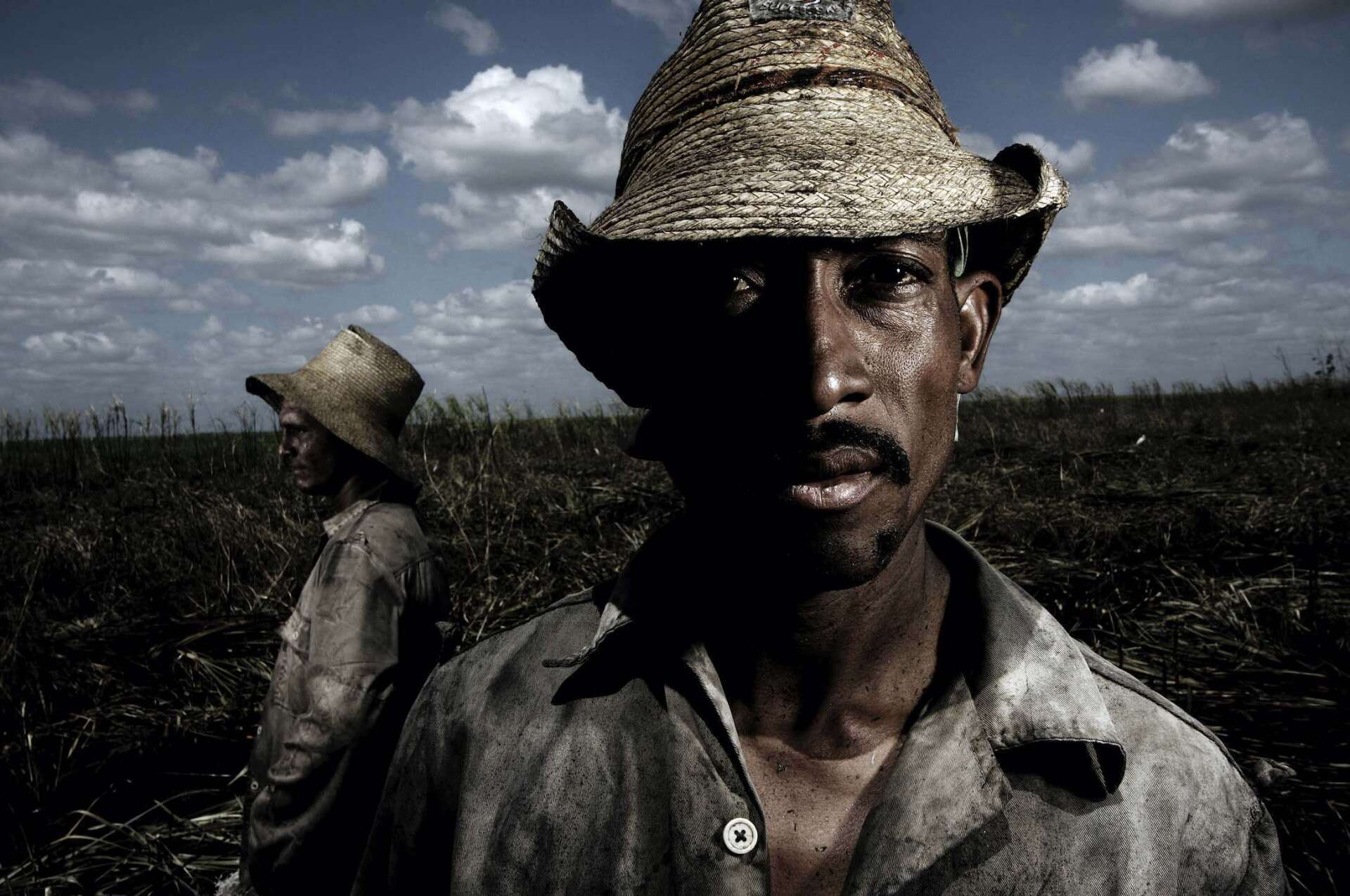
Macheteros - Sugar cane beater Vicente Garcia Nuñez, near the Central Batalla de las Guasimas sugar cane factory.
Macheteros - Zuckkerrohrschläger Vicente Garcia Nuñez, nahe der Zuckerrohrfabrik Central Batalla de las Guasimas.
©Sven Creutzmann

Clara and Valentin - Valentin and Clara dancing on Christmas Eve 1992 under Che Guevara picture and in front of Christmas tree
Valentin und Clara tanzen am Weihnachtsabend 1992 unter Che Guevara Bild und vor Weihnachtsbaum
©Sven Creutzmann
On the exhibition in Sven Creutzmann's own words:
Yes, of course it is true that Cuba has a well-structured health and education system, and all that for free. And yes, it is also true that the country has been suffering under the US embargo for 6 decades. But does that explain all the ills in the country? No, because it is also true that many of the country's problems are home-made. The Cubans therefore speak of two embargoes, the one imposed by Washington and the internal one, because their own government is having such a hard time, among other things, finally unleashing the productive forces of the private sector. Cuba, ...Si, pero no... a country full of contradictions.
I have been documenting the Cuban revolution with my camera for over 30 years, but these photos of Fidel Castro's revolution were taken in 6 fundamentally different countries.
The first Cuba I got to know was the Cuba of the late eighties. It was the time before the great implosion of the Soviet Union, which had been heavily subsidising Cuba since the 60s, and in Cuba wages and salaries still had value, you could afford a meal in a good restaurant, and on the ration coupon, the libreta, you could get cheap food, clothes, cigars and even rum.
Then I got to know the second Cuba, in the early 90s. The shock waves of the disintegrating communism in Europe hit Cuba, power cuts of up to 18 hours became an almost unbearable daily routine and Fidel Castro proclaimed the Periodo Especial, the "special period", nothing worked anymore.
In a desperate attempt to save what could be saved, Castro then personally announced to his people in 1993 the bitter measure that was to usher in the third Cuba: the release of the hitherto banned and hated US dollar, which was nevertheless not enough to prevent the mass exodus of 1994, when over 35,000 Cubans left the island on homemade rafts.
Eventually, however, the "dollarisation" of the Cuban economy and the opening up to Western tourism had an effect, and by the end of the 1990s the country had stabilised again, the power cuts were a thing of the past, and Cuba became a completely different country again, the fourth.
The fifth Cuba is the turning point in time of the retirement of the revolutionary leader, the Comandante en Jefe. During a speech in 2006, Fidel fell seriously ill and shortly afterwards had to delegate all government business to his brother Raul, who finally became Cuba's new president in 2008. He quietly initiated revolutionary measures, talks were held with Washington, embassies were reopened, and in 2016 Barack Obama became the first US president to visit Cuba. Shortly afterwards, the Rolling Stones played for free in front of hundreds of thousands in Havana, Hollywood filmed a new episode of Fast & Furious and Lagerfeld presented his new Chanel collection.
But just when everyone thought Cuba was finally becoming a normal country, with reasonable relations with its big neighbour to the north, along came Trump, flooding the island with new embargo restrictions, then Corona too, and the absence of tourism, so vital, was just one of the serious consequences. Then in 2018, Miguel Diaz Canel, the first head of state not named Castro, was elected. He decreed a huge monetary reform, but the country is suffering extremely from the consequences of both embargoes and Corona, and no one knows how it will continue, the crisis is once again taking on historic proportions, over hundreds of thousands have left the country in recent months. Quo Vadis Cuba, where are we heading? We are in the sixth Cuba.
---------
Sven Creutzmann "Cuba: The Endless Revolution" - Sammlung Michael Horbach
28 August 2022 - 09 October 2022
Vernissage: Sunday, 28 August 2022 11:00-14:00 hrs
Wormser Straße 23, 50677 Cologne, Germany
Article continues below
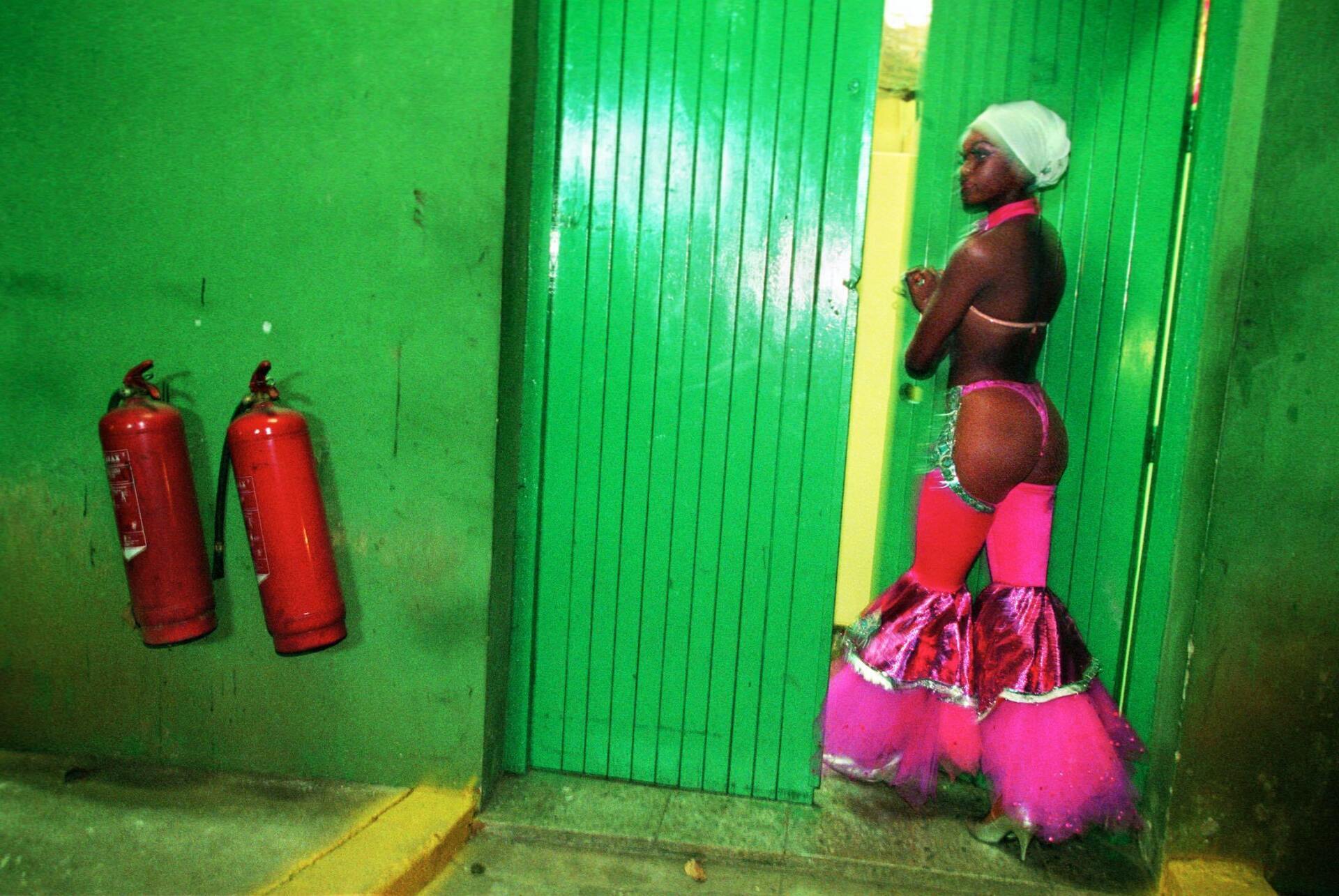
The gateway to paradise - Idelbis, student of the Tropicana Cabaret, before her first show.
Das Tor zum Paradies - Idelbis, Schülerin des Tropicana Cabaret, vor ihrer ersten Show.
©Sven Creutzmann

Despite everything - Daylin's feet in broken ballet shoes, next to the shoes for the show, by Yanelis. The shoes are passed on by the students to the next generation, each student writing her name in the shoe. Tropicana Cabaret School of Dance.
Trotz Allem - Die Füsse von Daylin in kaputten Ballet Schuhen, neben den Schuhen für die Show, von Yanelis. Die Schuhe werden von den Schülerinnen an die nächste Generation weiter gegeben, jede Schülerin schreibt ihren Namen in den Schuh. Tropicana Cabaret Tanzschule.
©Sven Creutzmann

Fidel and the Pope - Fidel Castro receives John Paul II, the first Pope to visit Cuba, in 1998.
Fidel und der Papst - Fidel Castro empfängt Johannes Paul II, der erste Papst der Cuba besucht, 1998.
©Sven Creutzmann
Artist Biography
Sven Creutzmann was born in East Berlin in 1962 and moved with his parents to West Germany in the midst of the Cold War. In Hamburg he became an advertising Kleinhempel studios in Hamburg, but switched to news photography, working for the British agency Reuters for 7 years.
In the following 27 years he did documentary photography for magazines such as Geo, Stern, Spiegel, Süddeutsche, FAZ, New York Times Magazine and worked for Getty Images in New York and Zeitenspiegel in Germany, among others. His most extensive work is the documentation of Fidel Castro's revolution in Cuba, which he has been photographing for over 34 years. He was the first West German journalist to be permanently accredited on the island and remains the only German photographer with a permanent work permit.
His experience of now over 40 years as a photographer, he has been passing on in workshops for 20 years; from Berlin to Cuba, worldwide.
Learn more:
-----
The Foundation
The Michael Horbach Foundation was established in 2000 by Michael Horbach after he sold his company, HORBACH Wirtschaftsberatung. Michael Hornbach formulates the guiding principle for his foundation and art collection as "A just world is possible". Part of his photo collection entitled "The Other Side of Beauty" was first exhibited in the Rheinisches Landesmuseum Bonn in 1995.
He also works as a photographer himself. As a photographer, he has published three illustrated books: My Cuba, Festivals in Mallorca and Pari. His photographic concern, he says, is to contribute to changing the image of beauty. Michael Horbach says that it is not fashion, perfection or artificiality that are of interest, but naturalness and authenticity.
Since 2021, the Michael Hornbach Foundation has also been cooperating with the cultural centre "espai passatemps" of the Malloquin photographer Miquel Frontera in Santa Maria, Mallorca.
More about this:
-----
Photo book accompanying the exhibition
"Unashamed Beauty" - Michael Horbach Collection
Edited by: Prof. Klaus Honnef
29,90€, 77 photographers on 175 pages
Deutsche Version
28. August 2022

After the hurricane - Roberto Reyes Velazquez stands in the ruins of his house, destroyed by Hurricane Ike, 2008.
Nach dem Hurrikan - Roberto Reyes Velazquez steht in der Ruine seines Hauses,z erstört duch den Hurrikan Ike, 2008.
©Sven Creutzmann
Art Calendar, 28. 8 2022
Sven Creutzmann „Cuba: Die unendliche Revolution“
Sammlung Michael Horbach
28. August 2022 - 09. Oktober 2022
Vernissage: Sonntag, 28.08.2022 11:00-14:00 Uhr
Düsseldorf, 27. 8.2022: Die Michael Horbach Stiftung zeigt die neue Ausstellung von Sven Creutzmann „Cuba: Die unendliche Revolution“. Seit 30 Jahren dokumentiert Sven Creutzmann die kubanische Revolution Fidel Castros. Er hatte mit seiner Kamera Zugang zum Comandante en Jefe und er ist einzige dauerakkreditierte deutsche Journalist in Kuba. So fotografierte er Fidel mit Nelson Mandela, bei der Beisetzung des Che Guevara, und zusammen mit Hugo Chavez. Er war dabei, als Obama als erster US Präsident Cuba besuchte, und er war Zeitzeuge beim historischen Treffen von Papst Johannes Paul II mit Castro, vor fast 25 Jahren.
Der damalige Herausgeber des Stern, Thomas Osterkorn, schrieb über ihn im Editorial des Magazins: „Kaum ein Journalist kennt Kuba so gut wie Sven Creutzmann“. Er hat mehrere Bücher über Cuba veröffentlicht, darunter „Havanna – Im Herzen Kubas“, Frederking & Thaler, 2019. Die Michael Horbach Stiftung befindet sich seit 2011 in den Köln in ehemaligen Atelierräumen.
Die Stiftung widmet sich gemeinnützigen Projekten, insbesondere Projekten, die ausländischen Familien und alleinstehenden Frauen, die unter der Armutsgrenze leben, helfen. Darüber hinaus engagiert sich die Stiftung für besonders förderungswürdige kulturelle Projekte.
----------
Zur Ausstellung in Sven Creutzmanns eigenen Worten:
Ja, natürlich stimmt es, dass Cuba ein gut strukturiertes Gesundheits- und Bildungssystem hat, und all das gratis. Und ja, es stimmt auch, dass das Land seit 6 Jahrzehnten unter dem Embargo der USA leidet. Aber erklärt das alle Missstände im Land? Nein, denn es stimmt eben auch, dass viele Probleme des Landes hausgemacht sind. Die Cubaner sprechen daher von zwei Embargos, dem vom Washington verfügten und dem internen, weil die eigene Regierung sich unter anderem so schwer damit tut, die Produktivkräfte der Privatwirtschaft endlich zu entfesseln. Cuba, ...Si, pero no... ein Land voller Widersprüche.
Seit über 30 Jahren dokumentiere ich die cubanische Revolution mit meiner Kamera, aber diese Fotos der Revolution des Fidel Castro entstanden in 6 grundsätzlich verschiedenen Ländern.
Das erste Cuba, das ich kennenlernte, war das Cuba Ende der Achtziger Jahre. Es war die Zeit vor der großen Implosion der Sowjetunion, die Cuba seit den 60ern kräftig subventionierte, und in Cuba hatten Löhne und Gehälter noch einen Wert, man konnte sich ein Essen in einem guten Restaurant leisten, und auf das Bezugsscheinheft, die Libreta, gab es günstig Lebensmittel, Kleidung, Zigarren und sogar Rum.
Dann lernte ich das zweite Cuba kennen, Anfang der 90er. Die Schockwellen des auseinanderfallenden Kommunismus in Europa brachen über Cuba ein, bis zu 18 Stunden Stromabschaltungen wurden zum fast unerträglichen Alltag und Fidel Castro rief die Periodo Especial aus, die „Sonderperiode“, nichts ging mehr.
In einem verzweifelten Versuch, zu retten, was zu retten war, verkündete Castro 1993 persönlich dann seinem Volk die bittere Maßnahme, die das dritte Cuba einleiten sollten: die Freigabe des bis dahin verbotenen und verhassten US Dollars, was aber trotz allem nicht genug war, um den massenhaften Exodus von 1994 zu verhindern, bei dem über 35.000 Cubaner auf selbstgebauten Flössen die Insel verließen.
Schließlich jedoch zeigte die „Dollarisierung“ der cubanischen Wirtschaft und die Öffnung für westlichen Tourismus Wirkung, und Ende der 90er stabilisierte sich das Land wieder, die Stromabschaltungen waren Vergangenheit, und Cuba wurde wiederum ein völlig anderes Land, das vierte.
Das fünfte Cuba ist die Zeitenwende des Rückzugs des Revolutionsführers, des Comandante en Jefe. Während einer Rede 2006 erkrankt Fidel schwer, muss kurz darauf alle Regierungs-geschäfte an seinen Bruder Raul delegieren, der dann 2008 endgültig auch neuer Präsident Cubas wird. Dieser leitet still revolutionäres ein, man spricht mit Washington, die Botschaften werden wieder eröffnet, und 2016 besucht Barack Obama als erster US Präsident Cuba. Kurz danach spielten die Rolling Stones gratis vor Hunderttausenden in Havanna, Hollywood drehte eine neue Folge von Fast & Furious und Lagerfeld stellte seine neue Chanel Kollektion vor.
Doch gerade, als alle dachten, dass Cuba nun endlich ein normales Land wird, mit vernünftigen Beziehungen zum großen Nachbarn im Norden, kam Trump, überflutete die Insel mit neuen Embargo Restriktionen, dann auch noch Corona, und das Ausbleiben des so lebenswichtigen Tourismus war nur eine der gravierenden Folgen. 2018 wurde dann mit Miguel Diaz Canel das erste Staatsoberhaupt gewählt, das nicht den Namen Castro trägt. Er verfügte eine gewaltige Währungsreform, doch das Land leidet extrem unter den Folgen der beiden Embargos und Corona, und niemand weiß, wie es weitergehen soll, die Krise nimmt erneut historische Maße an, über Hunderttausende haben in den letzten Monaten das Land verlassen. Quo Vadis Cuba, wohin des Weges? Wir befinden uns im sechsten Cuba.
Sven Creutzmann „Cuba: Die unendliche Revolution“ - Sammlung Michael Horbach - August 2022
28. August 2022 - 09. Oktober 2022
Vernissage: Sonntag, 28.08.2022 11:00-14:00 Uhr
Wormser Straße 23, 50677 Köln
Künstler Biografie
Sven Creutzmann wurde 1962 in Ost Berlin geboren und zog mit seinen Eltern inmitten des Kalten Krieges nach Westdeutschland. In Hamburg wurde er in den Kleinhempel-Studios zum Werbefotografen ausgebildet, wechselte aber in die Nachrichtenfotografie, und arbeitete 7 Jahr lang für die britische Agentur Reuters.
In den folgenden 27 Jahren machte er Dokumentarfotografie für Magazine wie Geo, Stern, Spiegel, Süddeutsche, FAZ, New York Times Magazine und arbeitete u.a. für Getty Images in New York und Zeitenspiegel in Deutschland. Sein umfangreichstes Werk ist die Dokumentation der Revolution Fidel Castros auf Cuba dar, die er seit über 34 Jahren fotografiert. Er war der erste westdeutsche Journalist der auf der Insel permanent akkreditiert wurde und ist weiterhin der einzige deutsche Fotograf mit einer dauerhaften Arbeitserlaubnis.
Seine Erfahrung aus mittlerweile über 40 Jahren als Fotograf, gibt er seit 20 Jahren in Workshops weiter; von Berlin bis Cuba, weltweit.
Mehr erfahren:
————-
Die Stiftung
Die Stiftung Michael Horbach wurde im Jahr 2000 durch Michael Horbach gegründet, nachdem er sein Unternehmen, die HORBACH Wirtschaftsberatung, verkauft hatte. Den Leitgedanken für seine Stiftung und die Kunstsammlung formuliert Michael Hornbach als „Eine gerechte Welt ist möglich“. Ein Teil seiner Fotosammlung mit dem Titel „Die andere Seite der Schönheit“ wurde erstmals 1995 im Rheinischen Landesmuseum Bonn ausgestellt
Dabei arbeitet er auch selbst als Fotograf. Als Fotograf hat er drei Bildbände veröffentlicht: Mein Cuba, Feste auf Mallorca und Pari. Sein fotografisches Anliegen sei es, dazu beizutragen, das Bild von Schönheit zu verändern. Michael Horbach sagt, dass ihn nicht Mode, Perfektion oder Künstlichkeit interessieren, sondern Natürlichkeit und Echtheit.
Seit 2021 kooperiert die Michael Hornbach Stiftung auch mit dem Kulturzentrum "espai passatemps" des malloquinischen Fotografen Miquel Frontera in Santa Maria, Mallorca.
Mehr hierzu:
michael-horbach-stiftung.de
—————
Fotobuch zur Ausstellung
"Unverschämte Schönheit“ - Sammlung Michael Horbach
Hrsg: Prof. Klaus Honnef
29,90€, 77 Fotografen/innen auf 175 Seiten
ALETHEA recommends:
27 August 2022

Irving Penn -Cottage Tulip Sorbet New York-1967-Conde-Nast
Art Calendar, 13 August 2022
London's Hamiltons Gallery brings together the exquisite floral still life of Irving Penn with contemporary British photographer Richard Learoyd. From 22 June to 10 September 2022.

©Erisvan Guajajara
Personalities, 27 July 2022
Erisvan Guajajara, coordinator and founder of Mídia Índia in an interview."The future is indigenous. Our struggles today guarantee a safe planet tomorrow." Mídia Índia is an influential collective in Brazil that fights for the recognition of indigenous people. For its founder, journalist Erisvan Guajajara, 2022 is a crucial year because it is election time in Brazil and they want to field many indigenous candidates for the "seat of the headgear", 50% of whom are indigenous women.
Niclas Castello & his gallerist Dirk Geuer
Art Calendar, 1 August 2022
New highlight at the 3rd SyltArtFair. Creative talk "Icons and Transformations" on 13 August 2022 at the 3rd SyltArtFair with Niclas Castello, VW chief designer Klaus Zyciora as well as Castello's Düsseldorf gallery owner Dirk Geuer. In addition to the Castello Cube, Niclas Castello is concerned with the transformation of painting into sculpture. His dialogue partner Klaus Zyciora took over as head of design for the entire Volkswagen Group in April 2020.

©Vanessa Daws
Art Calendar, 3 August 2022
Water artist Vanessa Daws - At Home in the Water. The English artist tells the story of Mercedes Gleitze, the first Englishwoman to swim the English Channel. Sea swimming has become a popular event since Corona and it is in this setting that Vanessa Daws stages her artworks. 15 October to 27 November 2022. Where: Fabrica in Brighton
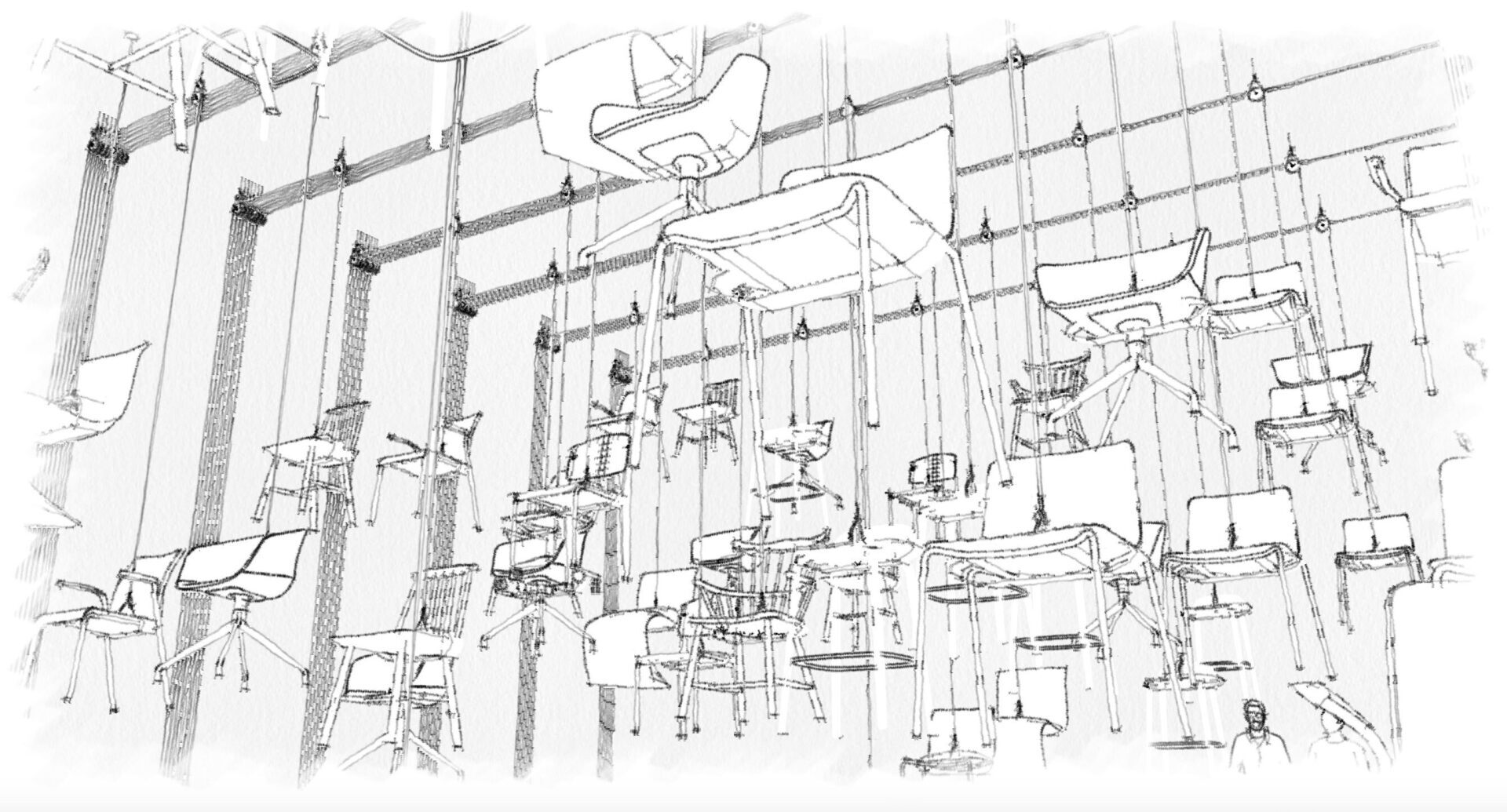
Michael Pinsky drawing The Final Bid @Michael Pinsky
Art Calendar, 13 August 2022
Michael Pinsky Interview, The Final Bid to Save the Planet - A manifesto for the reuse of objects. 30.10.2022 to 26.02.2023 at the Draiflessen Collection, Mettingen.
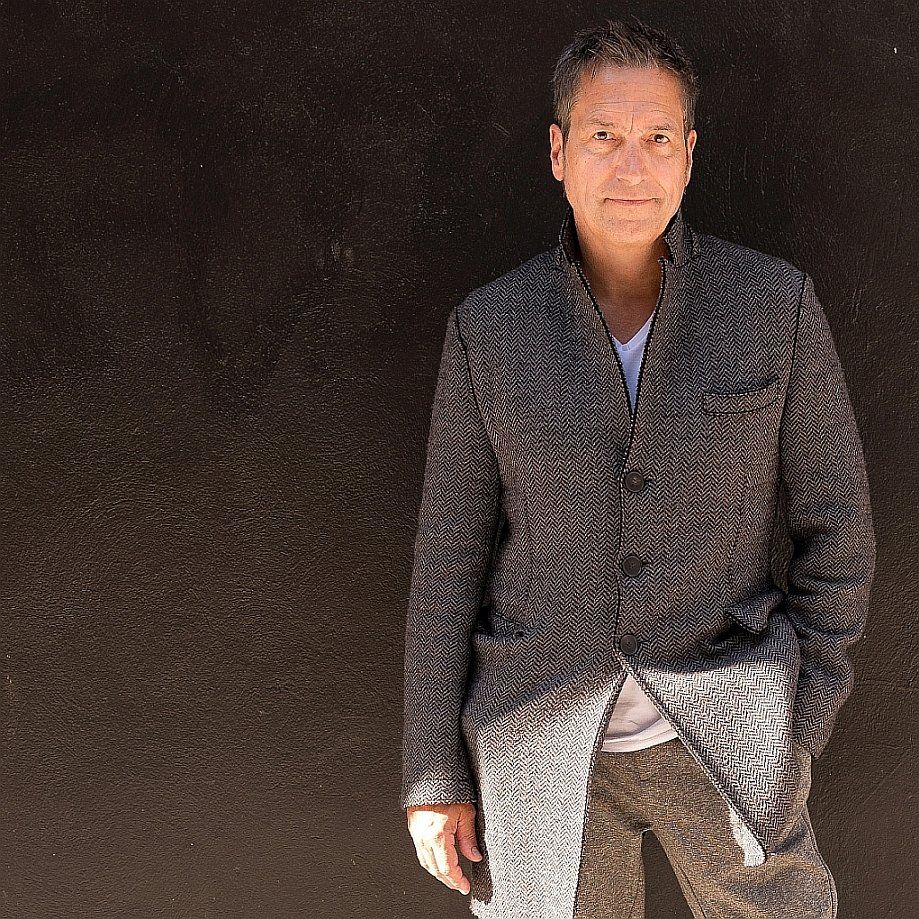
Dieter Nuhr - rights by Dieter Nuhr
Art Calendar, -24 August 2022
Dieter Nuhr Exhibition in Venice - Circondato di Lontano - Surrounded by Distance. Parallel to the 59th La Biennale di Venezia, TV star and painter Dieter Nuhr is exhibiting in the historic Sale Monumentali of the Biblioteca Nazionale Marciana, directly on St Mark's Square in Venice. Dieter Nuhr is also showing drawings made especially for the exhibition for the first time.

James Turrell ©Swarovski
Art Calendar, 5 August 2022
"Umbra, 2022" by James Turrell has become the 18th Wunderkammer in the Swarovski Crystal Worlds,

Courtesy of Google and Map Project Office
- Photography by Taran Wilkhu
Art / Design 31 July 2022
Little Signals by Google & Map Project Office - Subtle Little Helpers in Calm Technology. Google is experimenting with a series of objects that subtly become little digital household helpers. The perfectly designed objects are based on "Calm Technology", i.e. technology that informs but does not require attention. The interaction between technology and people should be designed to take place in the periphery and not be the centre of attention.

Collin at sunset ©Jess T. Dugan
Art Calendar / Art, 26 July 2022
"Jess T. Dugan: I want you to know my story". Exhibition by Jess T. Dugan at Illinois State University Galleries from 17 August 2022. Dugan's portraits are world-renowned and explore the intersections of individual identities in which they seek intimate connection with others. They draw on their queer experience and understanding of masculinity.
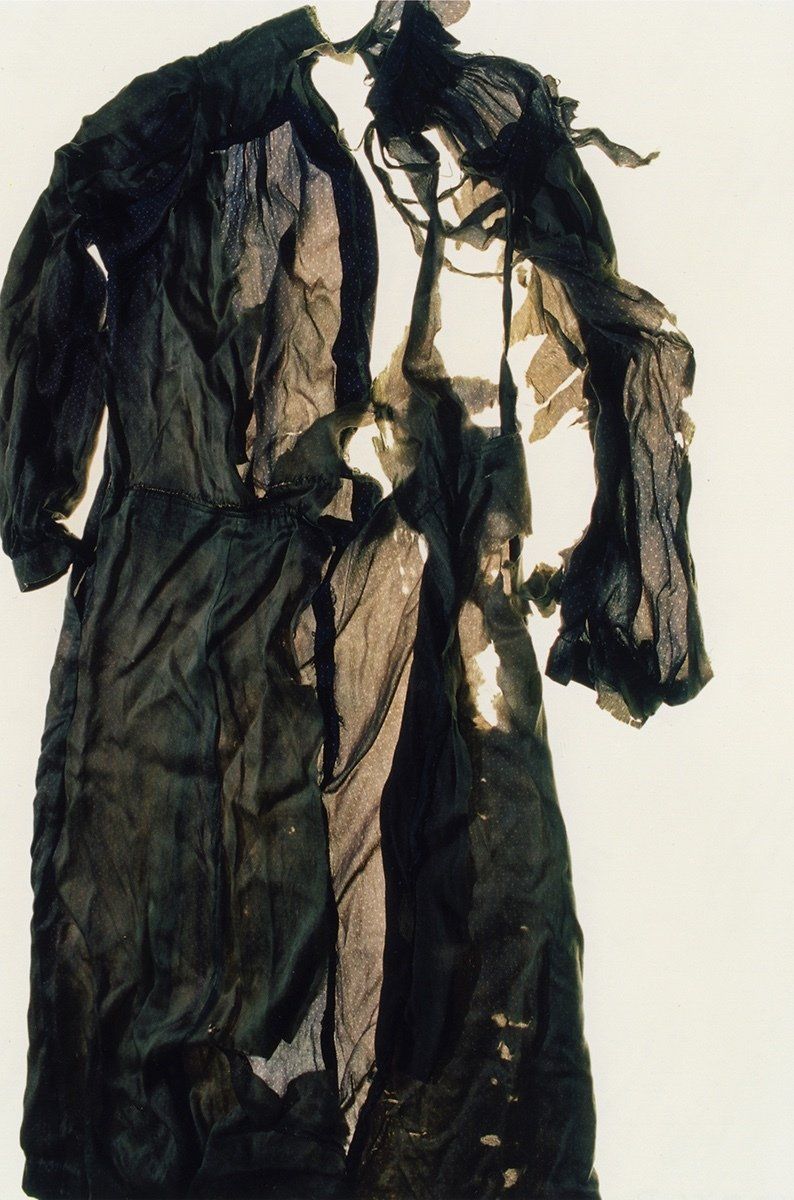
©︎Ishiuchi Miyako,ひろしま/hiroshima #104 Courtesy of Third Gallery Aya
Art Calendar / Art, 26 July 2022
Ishiuchi Miyako, rare exhibition in Edinburgh. Stills Centre for Photography presents rare solo exhibition of Japanese photographer Ishiuchi Miyako, including Testimonies from the Hiroshima Peace Memorial Museum, Mother's, Japanese entry at the Venice Biennale 2005 and Frida Kahlo possessions from the Frida Kahlo Museum.




